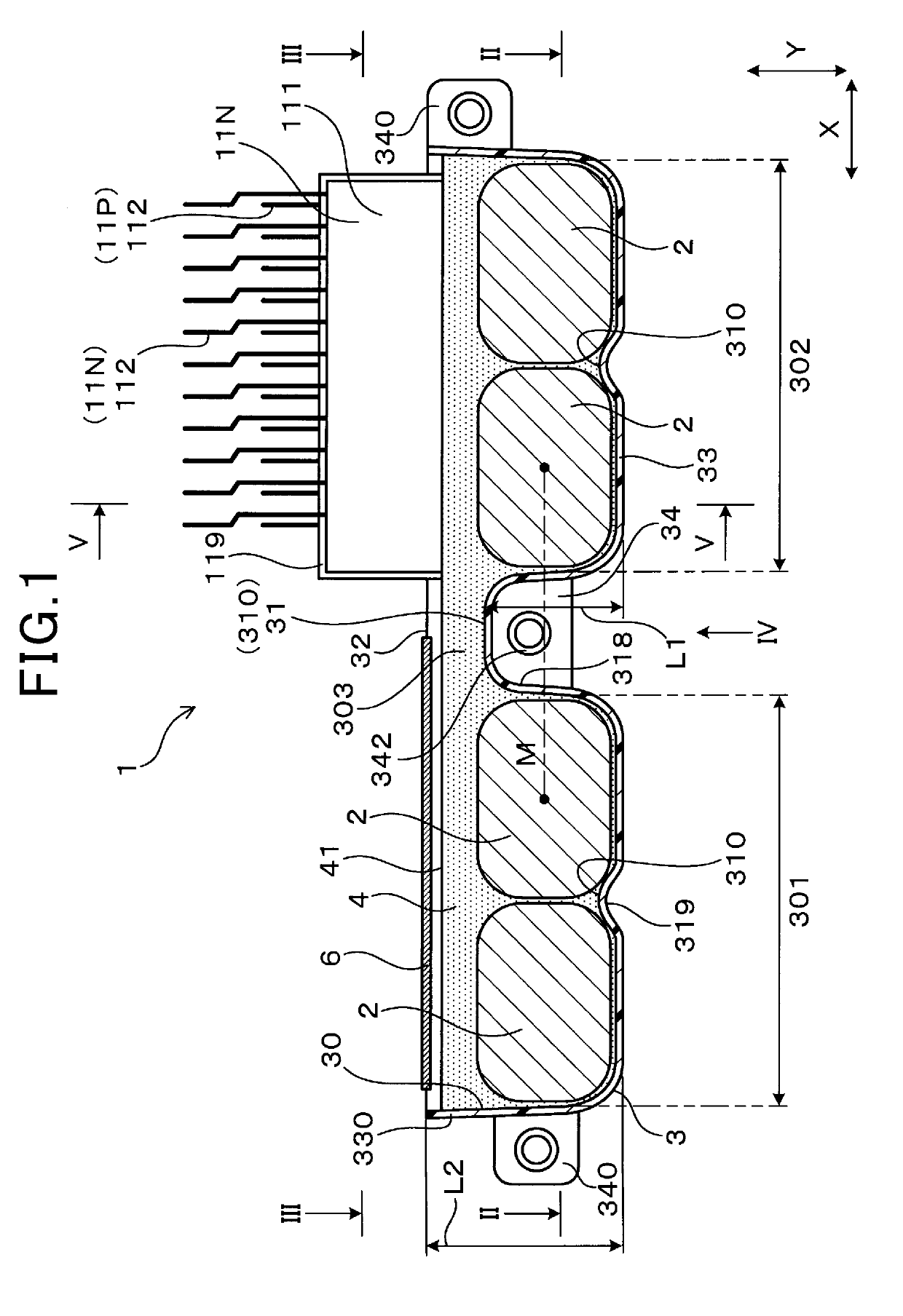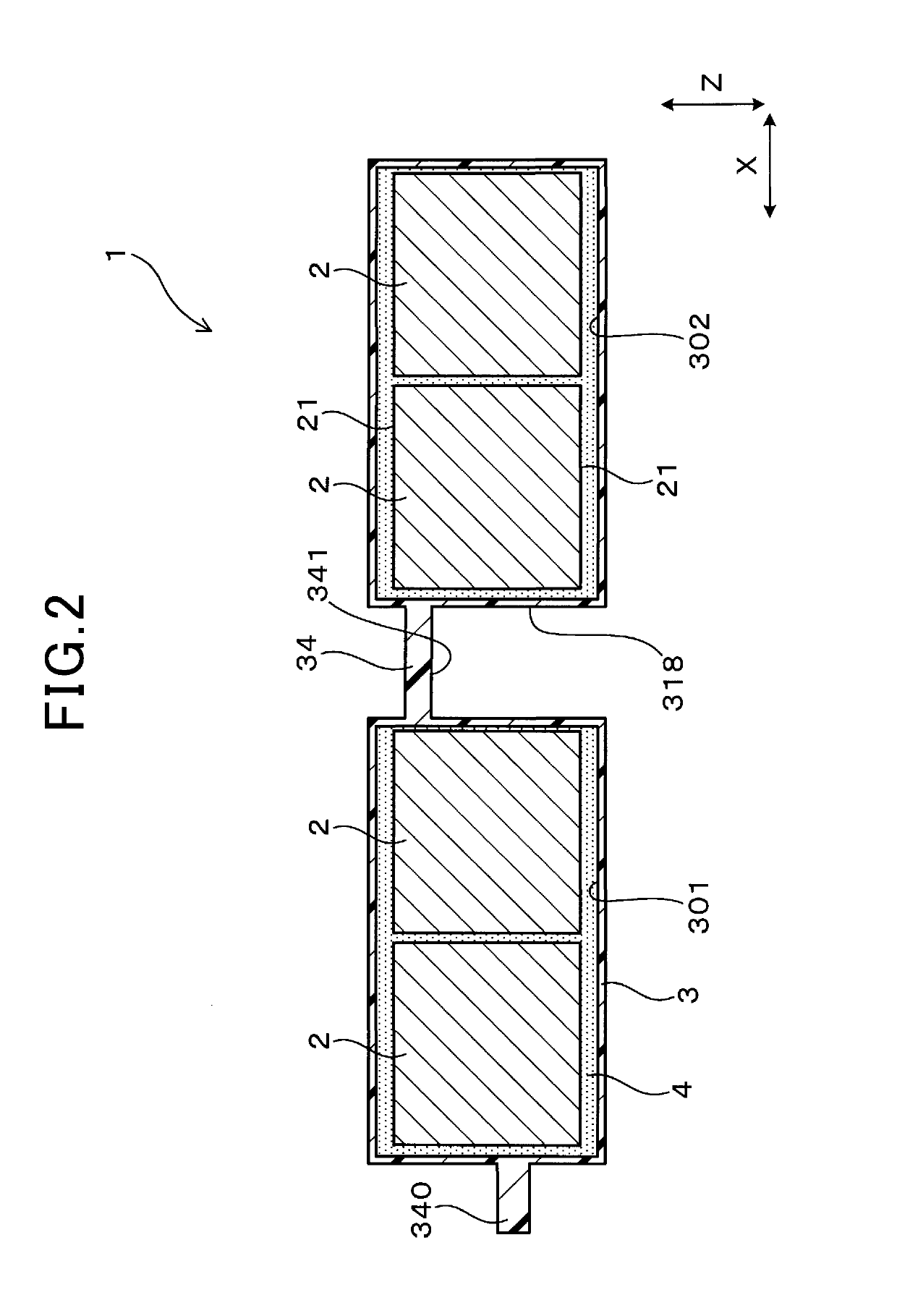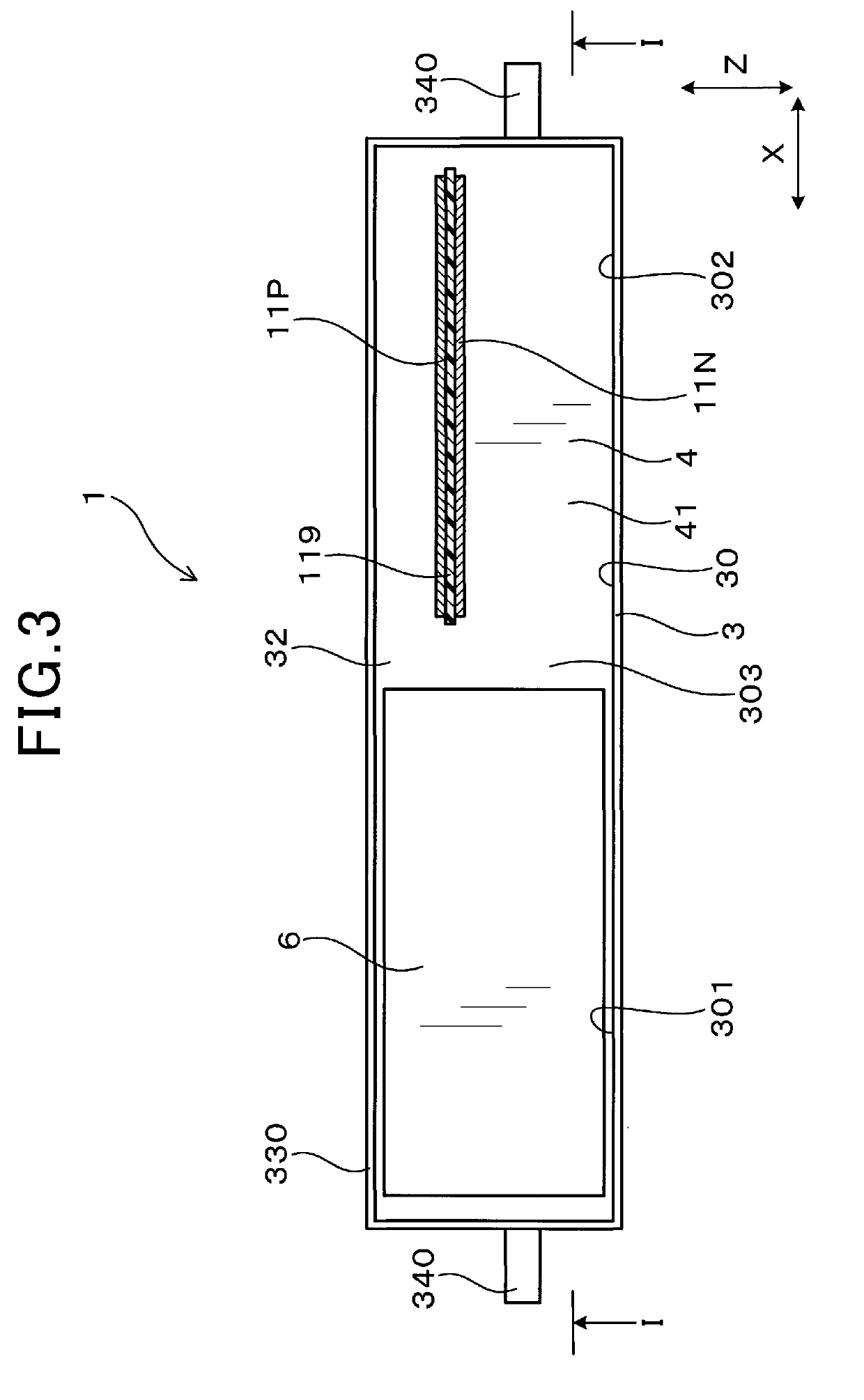Capacitor module
a capacitor and module technology, applied in the field of capacitor modules, can solve the problems of thermal interference between adjacent capacitors and thermal interference, and achieve the effect of minimizing thermal interference between capacitors
- Summary
- Abstract
- Description
- Claims
- Application Information
AI Technical Summary
Benefits of technology
Problems solved by technology
Method used
Image
Examples
first embodiment
[0037]The capacitor module 1 according to an embodiment will be described below with reference to FIGS. 1 to 10.
[0038]The capacitor module 1, as clearly illustrated in FIGS. 1 and 2, includes a plurality of capacitors 2, the capacitor case 3, and the sealing resin 4. The capacitor case 3 has the capacitors 2 mounted therein. The capacitor case 3 is filled with the sealing resin 4 to hermetically seal the capacitors 2 within the capacitor case 3.
[0039]The capacitor case 3 has the inward-facing portion 310 disposed between every adjacent two of the capacitors 2. Each of the inward-facing portions 310 is formed by a portion of an outer wall of the capacitor case 3 which protrudes or bulges inwardly between the adjacent capacitors 2.
[0040]The inward-facing portions 310 include at least one intervening inward-facing portion 31 in the following way. Specifically, as viewed in the height-wise direction Z, the intervening inward-facing portion 31 is one of the inward-facing portions 310 sha...
second embodiment
[0082]The capacitor module 1 in the second embodiment, as illustrated in FIGS. 11 to 14, has the contacting surface 341 of the fastening portion 34 which faces in the direction Y. Specifically, the contacting surface 341 faces in a direction opposite a direction in which the intervening inward-facing portion 31 protrudes.
[0083]The metallic member 342 is insert-molded with the capacitor case 3 so as to have an axis thereof oriented in the direction Y.
[0084]The metallic member 342 has a first end that is a lower one, as viewed in FIG. 11, of ends opposed to each other in an axial direction thereof. The first end is, as clearly illustrated in FIGS. 11 and 13, exposed outside the capacitor case 3 and faces away from the open surface 32 in the direction Y. The first end forms at least a portion of the contacting surface 341 of the fastening portion 34. The metallic member 342, as can be seen in FIGS. 11 and 12, also has a second end that is an upper one of the ends thereof, as viewed in ...
third embodiment
[0092]The capacitor module 1 in the third embodiment has the capacitor case 3 which is, as illustrated in FIG. 15, equipped with a plurality of heat dissipating fins 317 disposed on an outer surface of the intervening inward-facing portion 31. The heat dissipating fins 317 protrude from an outer wall of the capacitor case 3 which forms the intervening inward-facing portion 31 into the outer recess 318.
[0093]The heat dissipating fins 317 is formed integrally with resin making up the outer wall of the capacitor case 3.
[0094]Other arrangements of the capacitor module 1 are the same as those in the first embodiment.
[0095]The use of the heat dissipating fins 317 arranged on the outer surface of the intervening inward-facing portion 31 enhances the dissipation of heat from the capacitor module 1. Specifically, the capacitor module 1 of this embodiment is designed to have heat releasing paths extending from the intervening inward-facing portion 31 disposed between the two adjacent capacito...
PUM
 Login to View More
Login to View More Abstract
Description
Claims
Application Information
 Login to View More
Login to View More - R&D
- Intellectual Property
- Life Sciences
- Materials
- Tech Scout
- Unparalleled Data Quality
- Higher Quality Content
- 60% Fewer Hallucinations
Browse by: Latest US Patents, China's latest patents, Technical Efficacy Thesaurus, Application Domain, Technology Topic, Popular Technical Reports.
© 2025 PatSnap. All rights reserved.Legal|Privacy policy|Modern Slavery Act Transparency Statement|Sitemap|About US| Contact US: help@patsnap.com



